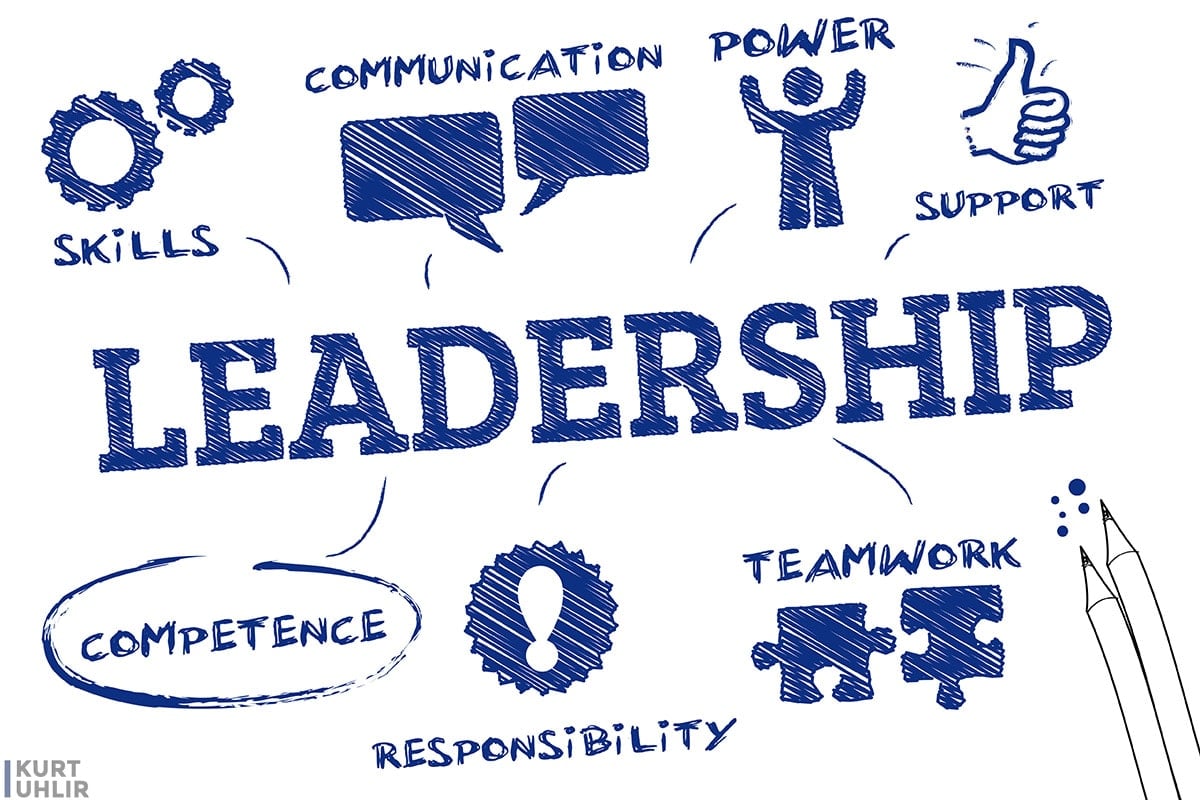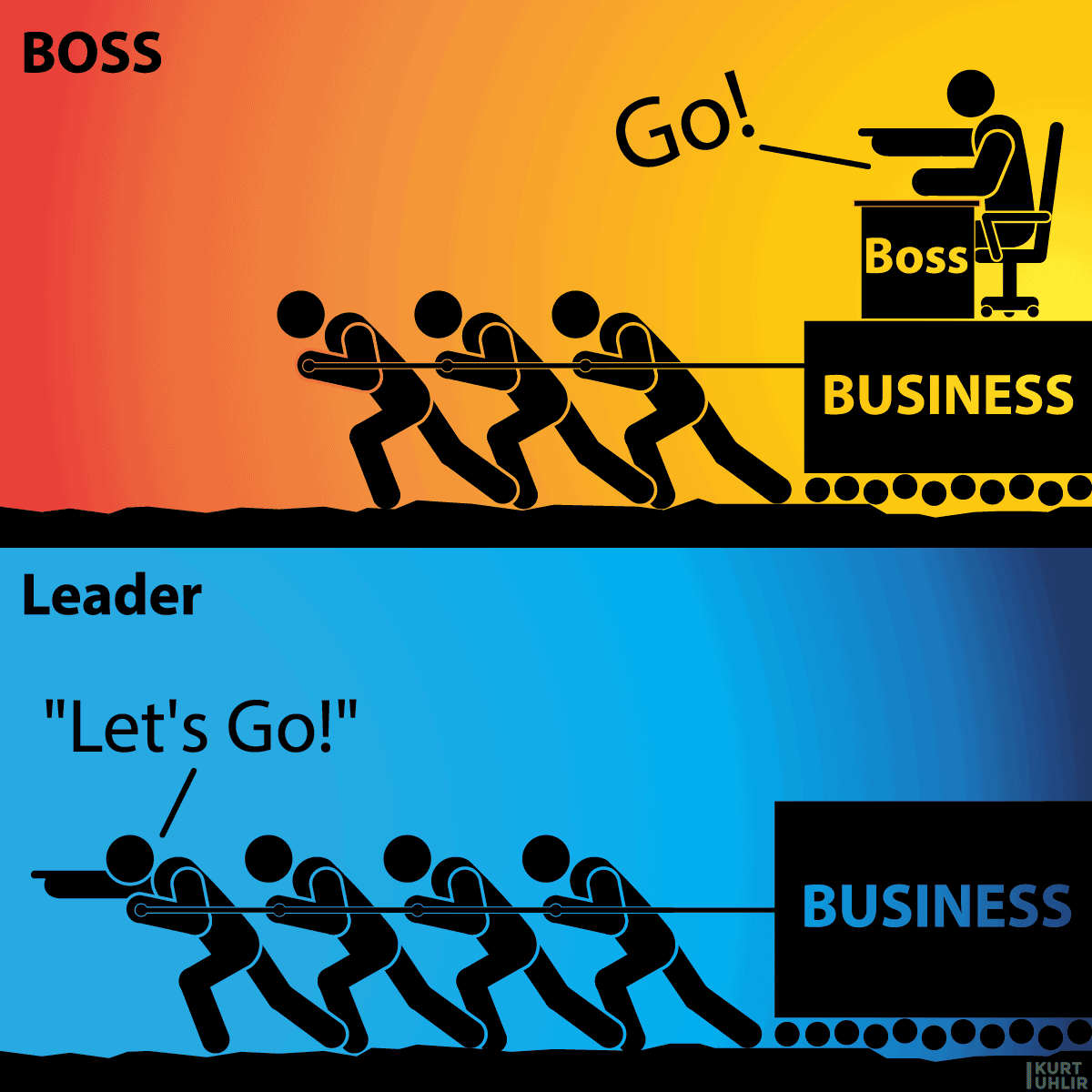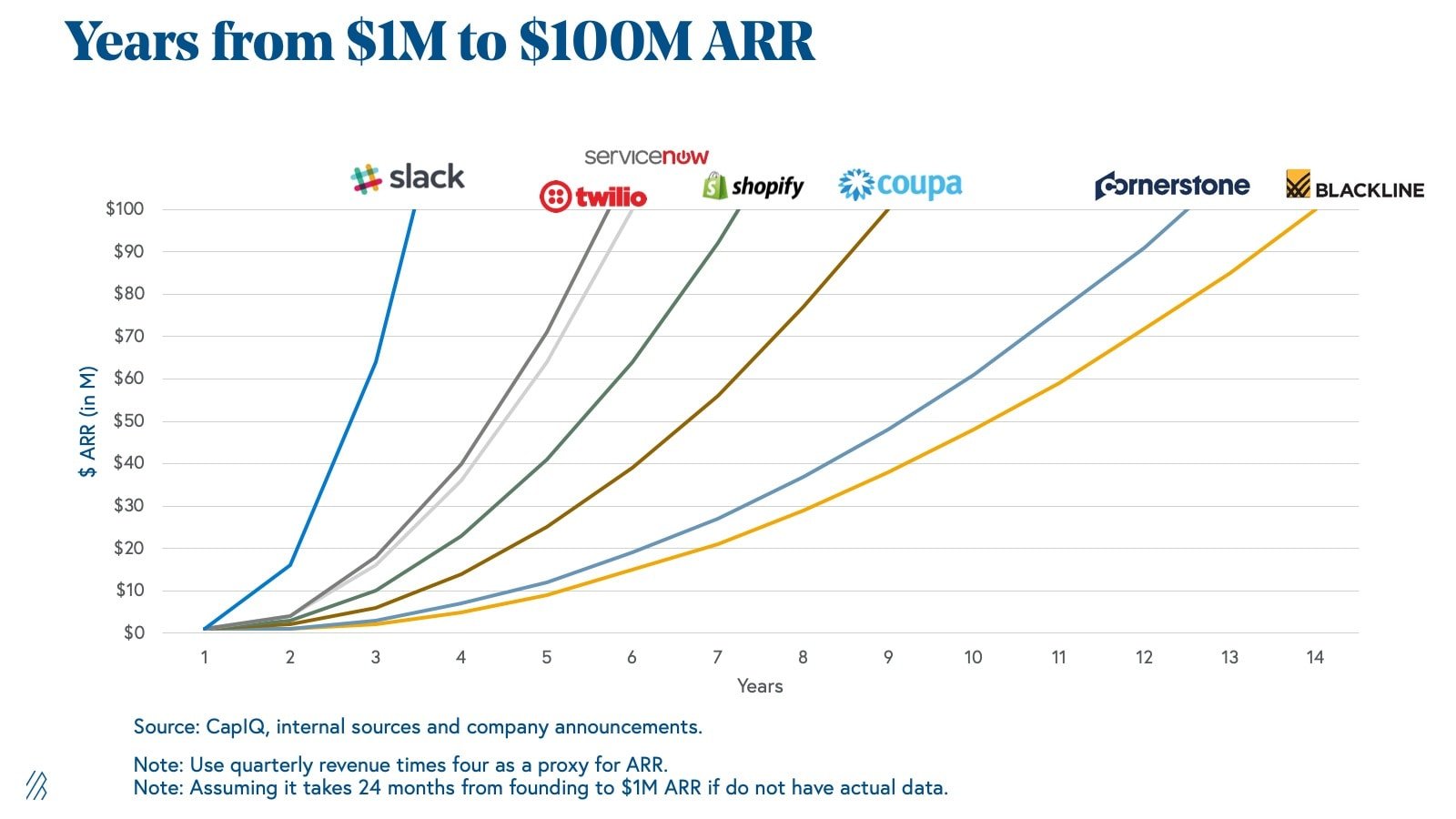Quarterly Business Review (QBR): Guide to Unlocking Real Growth
Business growth requires a commitment to examine how you run your company, a strategy for expanding in the future, and concrete ways to get there. A quarterly business review (QBR) allows you to get your clients and your clients’ executives together to discuss their future objectives and plans.
This review will help you examine the state of the businesses and your customer relationships and plan how you may add more value to them. Read on for an in-depth description of a QBR, who should participate, and the questions you need to ask to make the review successful to unlock true growth.
What Is a QBR?
A QBR is a regular meeting held by a company to review its performance and progress on a quarterly basis. It also includes a discussion and plan for the next quarter.
Perspectives on the necessity of QBRs are divided, with some stakeholders viewing them as essential for fostering long-term customer partnerships, while others consider them merely beneficial but not crucial. A QBR can be an effective tool for driving real growth and improving the company’s overall performance. It aims to identify areas for improvement and business development and to conceive strategies to address any business challenges or issues that may have arisen.

Definition and Purpose
A Quarterly Business Review (QBR) is a strategic, company-wide meeting where leadership and key stakeholders from all critical departments come together to evaluate the organization’s performance over the past quarter and align on priorities for the next.
Unlike the customer-focused QBR often used in sales and customer success, this type of QBR serves as an internal checkpoint for assessing the company’s trajectory.
A company-wide QBR is not just about reviewing KPIs and financial metrics—it’s a space to diagnose challenges, uncover opportunities, and foster collaboration across teams. By breaking down silos and creating a forum for transparent discussion, a QBR helps ensure the company remains agile, focused, and aligned with its long-term vision while adapting to short-term needs.
Different Types of QBR Meetings: Internal vs. Sales and Customer Success
In the world of business, the term “Quarterly Business Review” (QBR) can refer to two distinct types of meetings, each serving a unique purpose. Understanding the difference between these QBRs is crucial for leveraging their full potential.
Sales and Customer Success QBRs: These meetings are typically customer-facing and involve customer success managers, account managers, and sometimes sales teams. The primary focus is on reviewing the client’s business needs, product usage, and overall satisfaction with the company’s offerings. These QBRs aim to strengthen customer relationships, identify expansion opportunities, and ensure alignment with the client’s strategic goals. They are a perfect opportunity to discuss how the company can deliver more value and address any issues the customer may face. Effective QBRs can reassure customers about the value of the product, ultimately influencing their decision to renew contracts or subscriptions once they expire.
Internal QBRs: This article focuses on the internal type of QBR, where the executives and leaders of a company come together for a strategic, company-wide review. These meetings are held to evaluate the organization’s performance over the past quarter, align on priorities for the next quarter, and discuss strategic initiatives. Unlike the customer-focused QBRs, internal QBRs serve as an internal checkpoint for assessing the company’s trajectory, identifying areas for improvement, and fostering cross-functional collaboration. They provide a valuable opportunity for leadership to engage in data-driven decision-making and strategic planning, ensuring the company remains agile and aligned with its long-term vision.
By distinguishing between these two types of QBRs, companies can ensure that each meeting serves its intended purpose, driving growth and success in both customer relationships and internal operations.
What Are the Benefits of a Quarterly Business Review (QBR)?
A quarterly business review can bring several benefits to a company. QBRs provide an opportunity for the company to review its progress against its business objectives and key results (OKRs), identify any issues or challenges, and take steps to get back on track. These interactions provide multiple chances for collaboration and alignment with clients, allowing both parties to understand and communicate mutual achievements throughout the year.
Reviewing performance and progress regularly, a QBR can help identify areas for improvement and set specific goals for the next quarter. A QBR can help a company become more efficient and streamline its processes, leading to cost savings and increased profitability. Additionally, data from QBRs can feed into broader operations, making it accessible across the organization for internal stakeholders to analyze customer trends and support decision-making.
In addition, a QBR provides a forum for accountability, encouraging open and honest communication among different teams and departments. Accountability fosters transparency and collaboration, leading to better decision-making and problem-solving. As a result, business relationships improve.
We held these at eXp World Holdings when I was on the executive team there and found great benefit in both the focused effort of the QBR and the time to coordinate all of the different companies under the EXPI holding company, including eXp Realty, Showcase IDX, Virbella, eXp Commercial, Zoocasa, etc.
QBRs Can Help Identify Trends and Inflection Points in Growth
In my experience, the cadence of slowing down refocuses the entire leadership team on the long-term desired outcomes and provides the best opportunity to identify any issues holding the company back from finding an inflection point in growth to unlock hypergrowth
Judson Green, a 19-year veteran executive of Walt Disney Co., first introduced me to QBRs in 2001 or 2002. Judson had been regarded as a potential successor to Michael D. Eisner at Disney. While at Disney, he served as Chairman of Walt Disney Attractions and CFO of the Walt Disney Co. leading the company’s global expansion in addition to the creation of a number of “destination resorts”.

Judson joined Navigation Technologies as CEO and began a growth that took our team from $85M to $1.44B in annual revenue. While based in Chicago, Judson would fly Denise (my boss who reported directly to him) and me to Florida to work out of one of his houses each quarter to talk through the state of the business, bottlenecks in growth, and to realign strategy for the next quarter to keep us focused on substantial growth. This later expanded to align with our global sales meeting where a huge portion of the growth team would gather for in-depth sales and product meetings. The small group of leadership quarterly meetings helped us identify so much of what was needed for growth.
I reconnected with Judson in 2010 after I left the company, and he became a mentor helping shape much of my business and personal growth. On our first call, he first asked about my personal life and family. Next, he asked if the new company I was at was doing quarterly strategy working sessions.
Who Are the Participants in Quarterly Business Review (QBR)?
Include representatives from all relevant departments or teams in your quarterly business review. It is also wise to involve a diverse group of stakeholders who can provide valuable input and perspectives on the company’s performance and progress.
The specific participants will depend on the size and structure of the company. Here are some of the teams that can take part in a QBR.
Executive Leadership Team
The Executive Leadership Team (ELT) should participate in a QBR to provide strategic direction, make critical decisions, foster communication and alignment, and demonstrate personal accountability. A QBR is an opportunity for the executive team to review the company’s performance and progress toward its strategic goals. It provides a chance to make any necessary adjustments to the strategy.
It also provides a forum for the ELT to consider and discuss important decisions based on data and analysis from different teams and departments. A QBR is also an opportunity for the ELT to talk to other departments and make sure that everyone is working together towards the same goals. There is always a course correction that takes place.
By participating in the QBR, the executive team shows its commitment to transparency, accountability, and active engagement in the company’s performance and progress.

Sales Team
Participating in a QBR can help the sales team stay informed, focused, and aligned with the business’s goals and priorities. A sales performance review meeting can help them identify areas of success and areas that need improvement. Another reason is to create an updated sales pitch (as the market changes, so should your message of how you help) and establish priorities for the next quarter, which can help them stay motivated and focused.
There should be at least one session that walks through the sales pipeline, the sales team’s approach to customer success, average sales cycle, and ideas to boost sales productivity.
A sales QBR can also be a valuable forum for the sales team to discuss challenges and identify growth opportunities. Additionally, a QBR can help the sales team align with other departments, such as marketing and product development. It will ensure that everyone is working towards the same business goals and that the sales team has the necessary resources and support.
While agile product teams should be talking to sales throughout the quarter, this time is dedicated to conversation and serendipity that can’t happen in short 15 to 60-minute calls.
Marketing Team
The marketing team can use QBRs to provide updates on marketing campaigns and initiatives, including their progress, results, and any challenges or issues encountered.
You should align marketing efforts with the overall goals and objectives of the business. By participating in QBRs, the marketing team can ensure that its actions align with the business’s general direction and priorities. A QBR is also a valuable forum for discussing any challenges the marketing team faces and identifying growth opportunities.
Furthermore, QBRs provide a forum for the marketing team to get feedback and support from other groups and stakeholders.
In organizations that take the more frequent view of high-growth leaders that every interaction with a potential customer all the way through decades of repeat purchases is “marketing”, this is critical. Steve Jobs, Elon Musk, and others have pushed this approach and placed the view of marketing as the critical filter that all sales and product development is viewed through. QBRs are incredibly helpful for CEOs that view their CMO as their closest strategic advisor.
Product Team
Great products have a fantastic product development team working on them. Teams in charge research how to develop new products, the consumer needs, and how to market each.
The product team can use QBRs to provide updates on product development status, including any challenges or issues encountered and any upcoming product launches. Modern companies know agile product development requires continually aligning product development with the overall goals and objectives of the business.
By participating in QBRs, the product team can ensure that its efforts align with the business’s general direction and priorities. As companies grow, filters naturally occur that obscure true problems, needs, and important clarifications from other teams. What is communicated changes as it is reported upward and across departments. QBRs provide environments to cut through these filters.
QBRs also facilitate collaboration and continuous learning. The product team can get valuable input from other teams that could help them further improve the company’s product based on real customer feedback.

Finance Team
The finance team can use QBRs to update the business’s financial performance, including revenue, expenses, and profitability. QBRs also allow the finance team to identify areas where the company can save money and improve its financial performance. They also provide the focused time to get agreement on the need for long-term investments to key areas.
Including the finance team in the QBR allows the product team to make more informed and financially sound decisions and ensures that the product aligns with the company’s overall financial goals – in both the short-term and long-term. This healthy conflict between temporal goals is important to balance.
In addition, I’ve often found some of the best growth opportunities have been unlocked from questions from both senior finance and legal team members.
Customer Success Team
The customer service team can use QBRs to update other teams on customer success levels (e.g bottlenecks for customers, product usage, renewal levels, rate of upsells, rate of referrals, etc.) and any issues or challenges that have arisen. The customer service team can give the product team tips on how to stay connected with affluent customers. Consequently, the product team can make informed decisions that will benefit the customer base and the company.
Whether in a software business, product business, or even a more transactional service industry such as residential real estate, a customer health score should be tracked by your team. Designate a single customer success manager for this if not already part of someone’s role.
The customer success team is on the front lines, interacting with customers and addressing their needs and concerns. They have a unique perspective on how the actual customer uses and perceives the product or service. Therefore, they can provide actionable insights into improving the product and help with honest discussions. Understanding the reasons why customers might decide to leave a product is crucial for retaining them and ensuring ongoing engagement.
Analytics Team
The analytics team is responsible for tracking and analyzing key metrics and performance indicators related to the product. Sometimes this role is held within individual other teams and sometimes it is separate. In any case, for a QBR, it is important that those sharing and collecting data work together to provide a true picture of the business.
They can provide valuable insights into how the product and services are performing and how other teams can improve it.
The analytics team can provide data on key performance indicators (KPIs) such as usage, engagement, and retention. KPIs help the product team understand how the product is performing and identify areas for improvement.
Operations Team
The Operations team manages and optimizes the processes and systems that support the product and customers. This team can use QBRs to provide updates on the efficiency and effectiveness of the business’s operations.
The operations team can help the product team identify bottlenecks and inefficiencies in the product’s processes and systems and work together to find solutions.
HR Team
The HR team is responsible for managing and optimizing the people and culture of the organization. The HR team can use QBRs to deliver updates on HR activities, including training and development, succession planning, and employee engagement and retention.
They can provide insights into employees’ needs and concerns and help the management find ways to address these issues.
Given the continued shift to fully remote companies, the incredible competition for true top performers, and companies implementing labor hoarding to facilitate growth (and provide business resilience), HR teams are critical to the discussion and planning beyond the next quarter. Too often, companies will take all the right actions and then be limited (or get derailed) by the inability to staff proven leaders who know how to work in remote (or onsite) teams to achieve their goals. HR must be part of the planning to move past the outdated view that you can just hire top performers when you need them by posting a job or going to an outside recruiting firm.
Legal Team
The legal team ensures that the company’s policies and practices comply with relevant laws and regulations.
The legal team can help the product team understand the legal risks and implications of their plans and decisions and provide guidance on mitigating these risks. They can support and guide the company during negotiations with external parties, such as partners or vendors.
The legal teams at most of the companies I’ve worked with do all of this and much more. Legal can be an incredible business asset. At high-growth or high-potential companies, we tend to bring on lawyers with a keen business sense. They can ask questions and help guide conversations at QBRs to ensure that key business concerns are heard and raised by groups that sometimes have a hard time communicating their needs.

Others to include
At the end of the day, you will benefit from including the influencers and representatives from those front-line employees that interact directly with your customers.
True leaders know that influence and leadership come from every level of the company and have nothing to do with title. You want to make sure that those influencing your internal culture and those interacting with your customers attend and are empowered to speak up at the QBR.
Preparing for a QBR
Preparation is the cornerstone of a successful Quarterly Business Review. Without a clear plan and aligned expectations, the meeting risks becoming just another status update rather than a strategic tool for driving meaningful progress. The goal is to approach the QBR with a mindset that values clarity, collaboration, and action. This means not only gathering the right data but also engaging the right people and setting the stage for productive discussions.
Whether it’s your first QBR or the 50th, preparation starts with understanding its purpose: to evaluate performance, identify opportunities, and recalibrate for success. It’s a time to challenge assumptions, spotlight wins, and tackle roadblocks head-on. The best QBRs are those that inspire confidence and clarity among the leadership team, creating alignment and momentum for the months ahead.
Getting into the Right Mindset
To get into the right mindset, consider the following:
Reflect on the big picture: What are the company’s overarching goals, and how does this QBR help move the needle?
Focus on collaboration: Approach the review as a collective effort, valuing diverse perspectives to identify blind spots and untapped opportunities.
Be data-driven, not data-blinded: Gather key metrics and insights, but avoid drowning in unnecessary details. Prioritize information that drives decision-making.
Foster transparency: Create an environment where challenges are seen as opportunities for growth, not failures to hide.
Clarify roles and contributions: Ensure each attendee knows their role in the QBR and comes prepared with the insights and updates their department owns.
What to Include
A well-structured QBR is the backbone of effective strategic planning. To ensure the meeting delivers value, it’s critical to include the right elements while avoiding unnecessary clutter. A thoughtful agenda keeps the meeting focused, actionable, and engaging for everyone involved.
Key Strategic Components of a QBR:
Performance Review
Start with a clear-eyed analysis of the company’s performance over the past quarter. At the end of the day, business outcomes matter and net revenue is the life blood that sustains the company. This includes:Financial metrics such as revenue, profit margins, and cash flow.
Operational KPIs like productivity, efficiency, or supply chain performance.
Department-specific updates that highlight successes, setbacks, and lessons learned.
Strategic Initiatives Check-In
Revisit ongoing projects and initiatives. Are they on track to deliver the intended results? This is the time to:Assess whether initiatives are aligned with long-term goals.
Identify any bottlenecks or resource gaps.
Decide if priorities need to shift based on new challenges or opportunities.
Competitive Landscape Review
Analyze shifts in the market or competitor activity. Discuss how external changes may impact your positioning and explore strategies to adapt.Key Challenges and Risks
Use this section to address headwinds the company is facing. This might include:Internal issues, such as team capacity or operational inefficiencies.
External risks, like economic trends or regulatory changes. Encourage open discussion and brainstorming to uncover solutions.
Forward-Looking Strategy
Transition into planning for the next quarter by defining clear, actionable goals. Focus on:Setting priorities for departments and cross-functional teams.
Establishing measurable targets to track progress.
Assigning ownership to ensure accountability for each initiative.
Team Alignment and Engagement
End the QBR by ensuring everyone is aligned and energized. Key actions here include:Summarizing key takeaways and decisions.
Reinforcing the company’s mission and vision to inspire action.
Encouraging feedback to refine future QBRs.
A robust QBR doesn’t just evaluate where the company has been; it lays the foundation for where it’s going. Including these elements ensures the meeting drives alignment, sparks innovation, and sets the stage for the company’s next chapter of growth.
Questions to Ask and Issues to Consider When Creating a Quarterly Business Review (QBR)
When creating a QBR, it is vital to ask the right questions to ensure that the review is effective and productive. Here are some key questions to consider when creating a QBR:
What were our successes this quarter? By reviewing your successes, you can identify the areas of your business that are performing well and understand what is driving that success. This review can help you focus on and invest in those areas to drive growth.
What opportunities are available for growth? Reviewing growth opportunities will help you identify new areas where your business can expand or diversify. It is a chance to discover new revenue streams and drive long-term growth.
What strategies should we focus on in the next quarter? Regularly reviewing your strategies ensures your efforts align with your future goals and objectives.
How can we better align our goals with our performance metrics? Aligning your goals with specific performance metrics will help you track your progress more effectively. It can also help you make better decisions about allocating resources and focusing your efforts.
How can we improve collaboration between teams? By reviewing collaboration between teams, you can identify any breakdowns in communication or coordination and take steps to improve them. You can ensure that team members work together effectively and efficiently.
What processes need to be updated or changed? Reviewing processes that are not working will help you identify opportunities to streamline or automate those processes. In this way, you can eliminate bottlenecks and improve efficiency.
What risks should we be aware of going forward? Reviewing potential risks can help you better prepare to respond to challenges that may arise in the future. By understanding the potential risks and their likelihood of occurring, you can make more informed decisions about allocating resources and focusing your efforts.
What challenges did we face this quarter? Reviewing your challenges can help you identify areas where your business could be doing better and take steps to address those problems. You can learn from those experiences and apply those lessons to future challenges.
What strategies worked well, and which ones didn’t? By identifying what strategies were successful, you can replicate those strategies in the future to improve your performance. On the other hand, by identifying strategies that didn’t work well, you can avoid making the same mistakes again and try alternative approaches.
How did our customer experience impact our performance? Reviewing customer success, failure, and feedback helps you identify areas where your customers are unsatisfied and take steps to improve those areas. As a result, you can increase customer satisfaction, which is essential for retaining and attracting new customers.
What goals should we set for the upcoming quarter? Reviewing your goals for the upcoming quarter allows you to track your progress and identify any areas where you may fall behind. This information can help you make any necessary adjustments to stay on track.
How can we improve our processes and systems to support our team better? Improved processes and systems can reduce the number of errors made by your team, saving time and resources and improving the quality of your work.
8 Tips for a Successful Quarterly Business Review (QBR)
Here are eight suggestions to make your Quarterly Business Review successful:
Set Clear Goals
Set clear goals for the meeting. The first step is to identify the purpose of the meeting to ensure that a quarterly business review is successful. Is it to review progress against goals, to set new goals for the next quarter, to discuss challenges and opportunities, or something else?
Setting clear goals can help focus the team’s efforts and ensure everyone is working towards the same objectives. Clear goals also provide a benchmark against which you can measure progress, allowing you to track your progress and identify areas for improvement.
Furthermore, clear goals provide a benchmark against which you can measure progress, allowing you to track your progress and identify areas for improvement. Clear goals will ultimately drive results by providing a clear roadmap for success.

Invite the Right People
To ensure that all relevant stakeholders attend the QBR, it is vital to identify and involve team members from different departments or functions. These people may include sales, marketing, finance, customer service, and operations.
It is important to:
Look for those in your company that are viewed as key leaders and influencers. These people may be different than those with specific titles or in roles that the C-suite views as important. Influence and leadership can and does come from any position at any level. This does not mean that everyone needs to be involved, but you do need to look beyond your typical hierarchy. These strong relationships are what really drive team success, and many outdated leadership models do not even acknowledge them.
Bring the true innovators and inventors. Now, you may need to give them some guidance on how to participate, but you will find incredible opportunities by bringing those with proven track records of new approaches to products, processes, and so on.
The purpose of the QBR should guide you on which stakeholders to invite, and the attendees may change from one QBR to the next. For example, if the purpose of the QBR is to review financial goals, more people from the finance team may be asked to attend.
Prepare Ahead of Time
Advance Planning will ensure the QBR is focused and efficient rather than wasting time on unnecessary topics or activities. Preparing ahead of time allows you to gather the necessary information and data to discuss and review during the QBR, such as progress updates, financial reports, and performance metrics. This means that leadership needs to be willing to allow people to carve out time from regular activities beforehand. Remember, to go fast, you must be willing to go slow.
You can also identify the key issues and challenges you will need to address during the QBR and develop strategies to manage them. In addition, early preparation allows you to create an agenda for the QBR, so you can ensure that all relevant topics are covered and keep the meeting on track. Each session also needs to have a timekeeper chosen ahead of time to keep the group on track for time.
Focus on Solutions
A quarterly business review must emphasize finding solutions rather than just identifying issues if it is to be a success. Identify and prioritize the key issues and challenges, then generate ideas and options for addressing them.
Evaluate them and select the ones that are most likely to be successful. Consider factors such as feasibility, impact, and resources required. Too often, leadership may view something as too costly or not possible based on past companies. Be open to the innovators that have new approaches and wisely consider these under “controlled risk”. I’ve been amazed at my teams’ ability to do things previously considered “impossible”.
By focusing on solutions, you can address challenges and issues more effectively and achieve the desired results. You can also improve your business’s efficiency by identifying and implementing more effective ways of achieving your goals.
Encourage Open Dialogue
Encouraging open dialogue during a QBR is essential for ensuring that you consider all relevant perspectives and that the meeting is productive. Creating a safe and inclusive environment where all stakeholders feel comfortable sharing their thoughts and ideas is essential. You may have to set ground rules for the meeting, such as respecting different viewpoints and avoiding judgment or criticism.
Speaking to multiple customers can reveal common trends and pain points, providing insights that can guide product improvements to better meet customer needs.
Ask for input and feedback from team members who may not normally speak up in meetings to ensure the session is all-inclusive.
Healthy conflict is the goal. You would rather people bring up problems and growth opportunities early. People need to be able to bring up alternative ideas and push back in a healthy way. Facilitating diverse backgrounds and strong opinions is a true skill. If your team does not have this skill, start hiring for it. To look for high-achieving servant leaders, see this guide
Set Actionable Goals
It is essential to set actionable goals that you can achieve within the next quarter to ensure that your QBR is successful. Identify the critical priorities for your organization. You can then review progress against the previous quarter, identify new opportunities or challenges, and align with the company’s overall future goals.
Use the SMART criteria to ensure your goals are specific, measurable, achievable, relevant, and time-bound. During or after the time, make sure each group creates and shares an action plan.
Follow-Up
Following up after the meeting is critical to ensure that the goals and action items are tracked and achieved. After the QBR, review the list of action items and ensure that they are clear and actionable. If necessary, break down larger items into smaller, more manageable tasks.
With this in place, you can regularly monitor progress toward achieving the action items and goals and provide support and resources as needed.
Following up on QBRs helps maintain focus and momentum on the business’s goals and objectives rather than letting them get lost in its day-to-day operations. You can also ensure that team members are held accountable for their progress and take action to address any issues or challenges.
Celebrate Successes
Recognizing and celebrating successes can motivate and inspire team members, leading to increased productivity and improved performance. You can quickly build team morale and foster a positive and collaborative work environment.
Recognizing successes can also encourage team members to continue striving for improvement and achieving even more outstanding results in the future.
It is crucial to acknowledge and applaud the efforts and accomplishments of your team. You can host a team lunch or happy hour to demonstrate the impact and value of your employee’s efforts. This kind of recognition helps reinforce the importance of their work and the business’s goals.
FAQs
Here are some frequently asked questions about Quarterly Business Reviews:
What are QBR meetings?
QBR stands for Quarterly Business Review. QBR meetings are typically held at the end of each quarter to review the performance and progress of a business or product.
How do I prepare for a QBR?
Define the purpose and objectives of the meeting, identify key stakeholders, and create an agenda to prepare for a quarterly business review. Gather relevant data and materials, and communicate the details to all relevant stakeholders.
Ensuring that all necessary preparations occur beforehand will help ensure that the QBR is productive and considers all relevant perspectives.
How long should a QBR last?
The length of a quarterly business review will depend on the discussion’s specific goals and the business’s complexity.
Ensuring the QBR is long enough to cover all relevant topics and allow for meaningful discussion is vital. However, it should not be so long that it becomes cumbersome or unproductive. In my experience, 2 – 4 days is the ideal timeframe as it allows people to hold it in person and travel and be home within a single week.
What’s the meaning of QBR in sales?
A QBR in sales is usually a meeting held at the end of each quarter to talk about the sales team and how they are doing. The goal of a QBR in sales is to ensure that the sales team is aligned with the organization’s overall goals and is making progress toward achieving them.
How many slides should a QBR have?
The number of slides for a QBR will depend on the specific goals and objectives of the meeting. It may also rely on the size and complexity of the reviewed business or product. There should be a few sessions (or a single quarterly business review presentation) that provide a project, state of the business, or business review.However, most sessions should provide just enough slides to facilitate the working session.
It is essential to focus on key points and avoid overwhelming the audience with too many slides. Ensure the slides are visually appealing, easy to read, and relevant to the discussions.
What makes a successful QBR?
Key factors contributing to a successful QBR include clear goals and objectives, detailed preparation, active participation, open and honest communication, and actionable next steps.
How do you run a successful QBR?
It is crucial to have a clear understanding of the goals and objectives of the meeting to run a successful quarterly business review. Gathering and organizing necessary data and information beforehand can also help the team make informed decisions about their strategy.
Make sure also to establish an agenda and invite relevant stakeholders to the QBR. Then, have timekeepers to help keep everyone on track in each session.
What are the three types of review meetings?
The three common types of review meetings are performance reviews, project reviews, and quarterly business review meetings.

Can a QBR be entirely remote or virtual?
Absolutely. The key to a successful QBR is intentionally preparing for and setting aside the days for leadership to focus on the QBR. Many leaders are trained at doing this with fully remote teams and tools like Zoom (with it’s breakout rooms), Miro, and others.
However, I know of quite a few teams that use QBRs as their 1 to 4 times a year that they get the entire leadership team together to work in person. This can be a great way to integrate new leaders into the mix at a fast-growing company.
What is another name for QBR?
QBR is the most commonly used term for this type of review, but it is also known as
business review meeting or quarterly strategy meeting.
What questions should I ask in a QBR?
Ask questions that will help you understand how the team is doing, what challenges it is facing, and what opportunities for improvement or growth exist. Insure that you truly understand what others are attempting to communicate and not what you think they are saying based on your hidden assumptions.
Executive Business Review (EBR) vs. QBR
Key Differences
While both Executive Business Reviews (EBRs) and Quarterly Business Reviews (QBRs) are essential tools for assessing business performance, they serve different purposes and involve different stakeholders. Understanding these differences can help you leverage each type of review more effectively.
Frequency: QBRs are held quarterly, providing a regular checkpoint to review progress and make adjustments. In contrast, EBRs are typically conducted semi-annually or annually, allowing for a more comprehensive evaluation of long-term strategies and goals.
Level of Detail: QBRs focus on granular details, such as key performance metrics, customer satisfaction, and operational efficiency. They are designed to identify immediate issues and opportunities. EBRs, on the other hand, take a high-level view, concentrating on strategic planning, market positioning, and long-term objectives.
Stakeholder Involvement: QBRs usually involve a smaller group of stakeholders, such as customer success managers, account managers, and department heads. EBRs, however, bring together senior executives and board members, providing a broader range of perspectives and insights.
Focus: The primary focus of QBRs is to review a customer’s satisfaction and progress with a company’s products or services, ensuring that short-term goals are met. EBRs are more strategic, focusing on broader business objectives, market trends, and competitive positioning.
By understanding these key differences, you can ensure that both QBRs and EBRs are used effectively to drive business growth and success.
The Importance of Customer Feedback
How Customer Feedback Impacts QBRs
Customer feedback is a cornerstone of any successful Quarterly Business Review (QBR). It provides invaluable insights into your customers’ needs, preferences, and experiences, allowing you to tailor your strategies to better meet their expectations. Here’s how customer feedback can significantly impact your QBRs:
Identifying Areas for Improvement: Customer feedback can highlight specific areas where your products or services may be falling short. Whether it’s a feature that needs enhancement or a support process that requires streamlining, this feedback is crucial for continuous improvement.
Developing Strategies to Increase Customer Satisfaction: By analyzing customer feedback, you can develop targeted strategies to boost satisfaction. This might involve implementing new features, improving customer support, or enhancing communication channels. The goal is to create a more positive and engaging customer experience.
Enhancing Customer Engagement: Feedback from customers can reveal opportunities to increase engagement. Whether it’s through personalized communication, loyalty programs, or community-building activities, understanding what your customers value can help you build stronger relationships.
Informing Product Development: Customer feedback is a goldmine for product development teams. It provides direct insights into what customers want and need, helping to prioritize features and improvements that will have the most significant impact.
Incorporating customer feedback into your QBRs ensures that your business remains customer-centric, continuously evolving to meet and exceed customer expectations.
Avoiding Common QBR Mistakes
Mistakes to Avoid
While Quarterly Business Reviews (QBRs) can be incredibly valuable, certain common mistakes can undermine their effectiveness. Here are some pitfalls to avoid to ensure your QBRs are productive and impactful:
Not Defining the Outcome of the QBR: Before the meeting, clearly define what you hope to achieve. Whether it’s aligning on strategic goals, addressing specific issues, or planning for the next quarter, having a clear objective will keep the meeting focused and productive.
Not Preparing a Detailed Agenda: A well-structured agenda is essential for keeping the meeting on track. Outline the key topics to be discussed, allocate time for each, and ensure all participants are aware of the agenda in advance. This preparation helps avoid unnecessary tangents and ensures all critical issues are covered.
Turning the Meeting into a Sales Pitch: QBRs should focus on building relationships and providing value to customers, not on making sales pitches. Use the time to understand the client’s business, discuss their challenges, and explore how you can add more value.
Not Listening to the Customer: Active listening is crucial during a QBR. Make sure to ask open-ended questions and seek feedback to understand the customer’s needs and concerns fully. This approach fosters a collaborative atmosphere and helps build stronger relationships.
Not Having a Strategy for Dealing with Challenges: QBRs are an opportunity to address challenges head-on. Come prepared with potential solutions and be ready to discuss them openly. Having a clear strategy for dealing with issues demonstrates your commitment to the client’s success and builds trust.
By avoiding these common mistakes, you can ensure that your QBRs are effective, fostering stronger relationships and driving real growth for your business.





